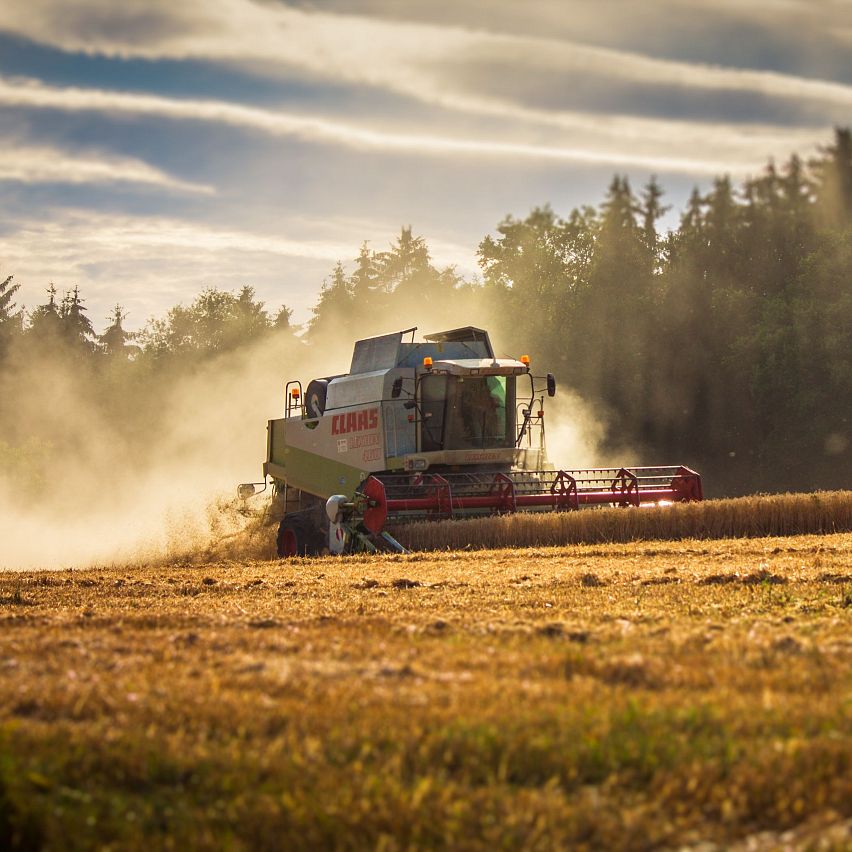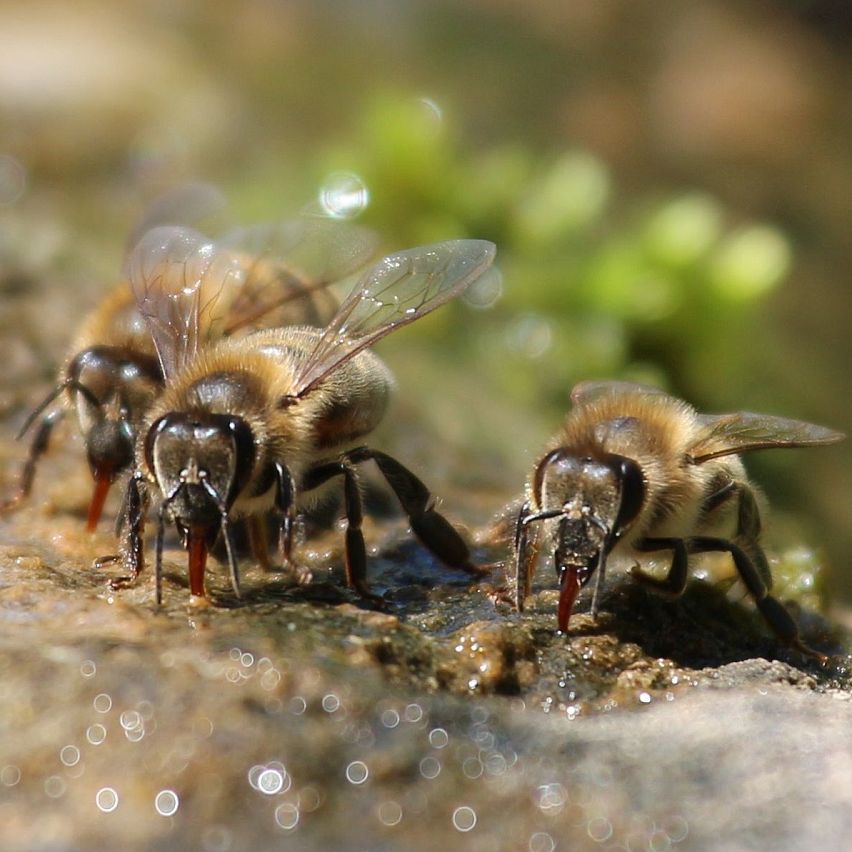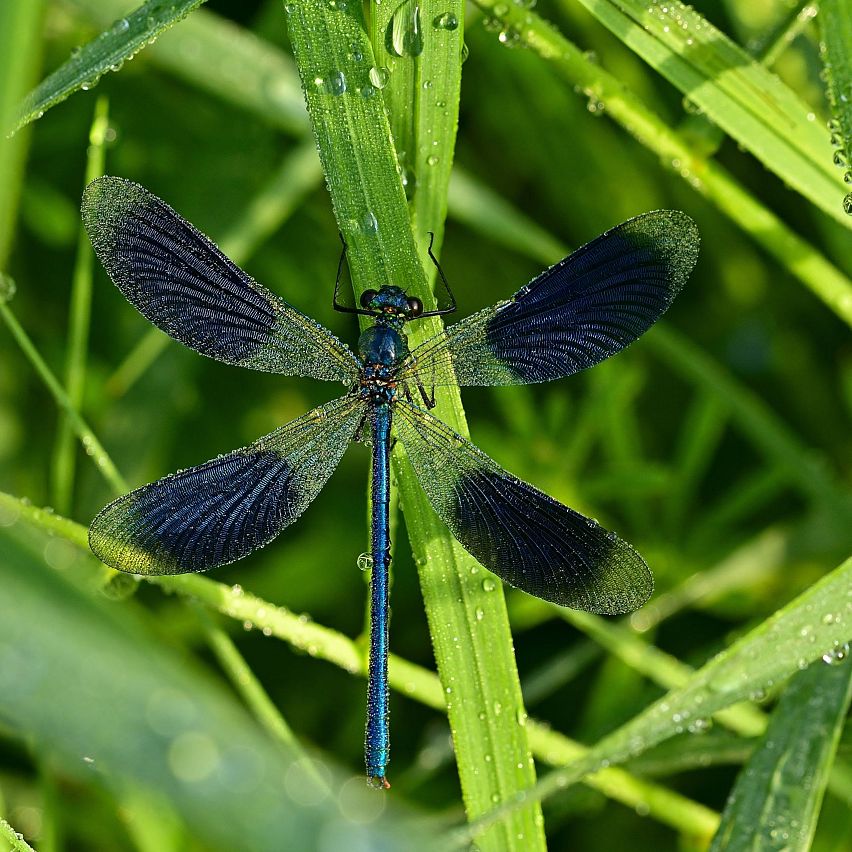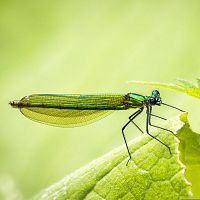Board 13 - Changing (environmental) world
We're currently experiencing the impacts of climate change, with shifts in weather patterns, precipitation, and temperature becoming evident across all natural habitats. At this station, we'll explore how bees and beneficial insects are responding to these changes, and how our environment is evolving as a result. As part of our discussion, we'll introduce the "Calyx" damselfly, a species that has recently established itself in our region (such as around the Reither Moor). The warming climate in the Tyrolean mountains has created a suitable habitat for this dragonfly species. If you encounter it in the forest, follow it to its home at the Reither Moor, where it will guide you along the climate nature trail around the moor and the Wildsee lake!

ALARM LEVEL NATURE
Friends in distress
Alarm bells are ringing in nature as habitat destruction, intensive agriculture, soil sealing, and climate change take their toll on our native flora and fauna. The loss of flowers and nesting sites has led to a dramatic decline in populations of wild bees, pollinators, amphibians, birds, and other animal species. Landscape ecologist and wild bee expert Heinz Wiesbauer reported population declines of 50 to 80% in the native wild bee population of eastern Austria in early 2023.
"Agricultural landscapes that were once teeming with biodiversity are now barren. Colorful meadows have vanished, replaced by frequent mowing, sometimes up to seven times a year. Natural embankments and open spaces along field paths, crucial nesting sites for wild bees, have disappeared," said Heinz Wiesbauer (Ecologist Essl: "Humans are the only cause of the sixth mass extinction", by Martin Stepanek published in STANDARD, 19 April 2023).
Concrete tracks: saving bees at home!
Soil sealing leads to the loss of flower meadows, depriving bees of vital foraging grounds. Take a stroll with your parents around your neighborhood. Count how many building sites have replaced once-flourishing meadows. Then, brainstorm together: How can we help the bees in our own backyard?

INSECTS IN NEED
Biodiversity and insects
With approximately one million described species, they're the most diverse class of animals. However, this diversity is under severe threat due to intensive agriculture, the widespread use of insecticides, land sealing, and light pollution. Some insect species have already gone extinct or are on the brink. The significance of insects and honey bees for food security is often overlooked. Optimal pollination not only ensures fruit production but also sustains human nutrition.

the newcomer
Banded damselfly
– Calopteryx splendens –
- Characteristics: Body length approximately 5 cm, wingspan 6 to 7 cm, one of the largest native small dragonflies, males with greenish-tinted wings and a black-blue shimmering band.
- Habitat: Prefers warmth, slow-flowing streams and rivers, sandy and sunny banks.
- Way of life: Males occupy territories which they vehemently defend against intruders. Females willing to mate are courted by the males with a back-and-forth courtship flight. After mating, eggs are laid in floating aquatic plants, sometimes even submerged below the water surface.
- Observation tip: Recognizable by its butterfly-like flight, males guard their territory from a perch - behavior and courtship can therefore be easily observed there.
- Observation period: End of May to September.

The warmth-loving banded damselfly only moved to the Wildsee a few years ago.
